Spring Woodland Wildflowers
04-01-2017
Writer(s): Dan Shepardson
There is an old saying that “April showers bring May flowers.” I find this to be partially true because the best time to hike and see the spring woodland wildflowers is mid-April to the end of May. This, of course, depends on a number of local factors such as climate, weather conditions, topography, the type of woods, and soil type. For the most part I start hiking in April in order to see and photograph the spring woodland wildflowers. To me there is nothing more impressive then the spring bloom of the woodland wildflowers. I find this equal to the spring bloom of alpine flowers and the summer bloom of prairie forbs.
This bloom is triggered by the sun’s energy that reaches and warms the forest soil, stimulating the growth of the spring beauties. This window of growth, however, is short-lived because as the leaves of the tall trees unfold, they block more and more of the sun’s rays. This, in turn, prevents the sun’s light from reaching the spring wildflowers, and as a result, they slowly fade away, completing their life cycle in several weeks. By summer, the forest canopy completely obscures the forest floor. Once covered in colorful displays of spring wildflowers, the forest floor now supports the growth of green shrubs and summer herbs that require less light and display less conspicuous flowers.
Five of my favorite early woodland bloomers, photographs lift to right, are: trillium, Virginia bluebells, Dutchman’s breeches, yellow wood poppy, and bloodroot. I have to hike different woods, parks, or different locations within the same woods to find each of these spring flowers, as each requires different abiotic factors to grow.
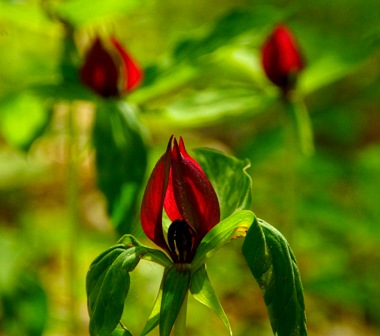
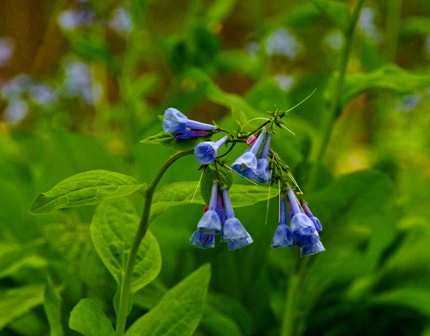
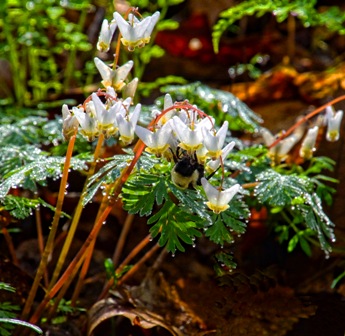
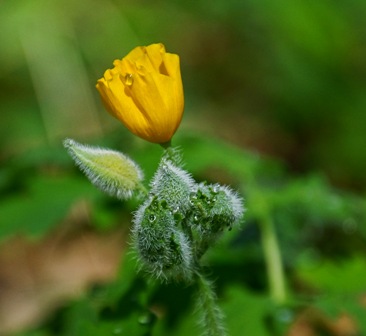
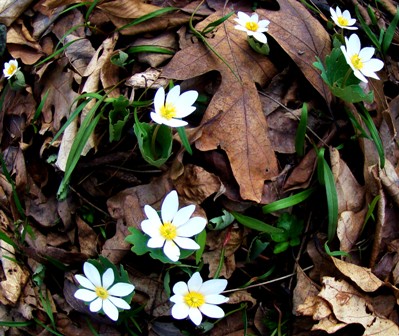
What I like about trillium is its symmetry, that three is the key to its appearance. I find its “evenness” based on an odd number unique. Trillium have three leaves, three green sepals, three colored petals, a three-chambered pistil, and three stigmas. In fact, “trillium” is Latin for “three parts.”
I often hike floodplains near rivers and streams to see Virginia bluebells, as they prefer moist woods; they are rarely found in meadows. I like their nodding trumpet-like, blue flowers that are pink in color before blooming. I find Virginia bluebells growing in masses, carpeting the forest floor, to be impressive.
It is the delicate, white, pantaloon-shaped flowers of Dutchman’s breeches that hang from a leafless, pink-colored stalk that attracts me to photograph them. The yellow-tipped spurs add a touch of class to the flowers. An early bloomer, it is pollinated by bumblebees. Don’t waste your time trying to smell the flowers; they are not fragrant. Dutchman's present a spectacular sight when growing in masses, carpeting the forest floor.
The yellow-flowered wood poppy prefers moist, semi-shaded environments like floodplains and low-lying areas in woods. In addition to its yellow flower, it produces yellow sap and has a hairy fruit. Like all poppies, its flower is short-lived.
Bloodroot displays a single eloquent, but fragile, white flower. The flower opens in sunlight and closes at night. What I like about bloodroot is that it has one large, lobed leaf that often curls around the flower stalk. They take up residence in moist areas in woodlands. Deer feed on the plant in early spring. Bloodroot is also a member of the poppy family and its name is derived from its red root sap.
I hope the photographs and information in this month’s blog about my favorite spring woodland wildflowers motivates you to hike the woods in search of these spring beauties and the many others that bloom before the trees leaf out.